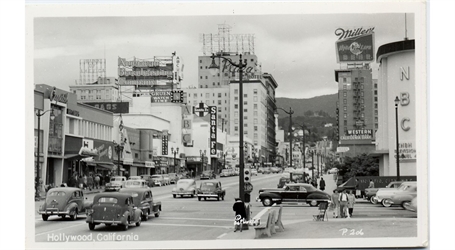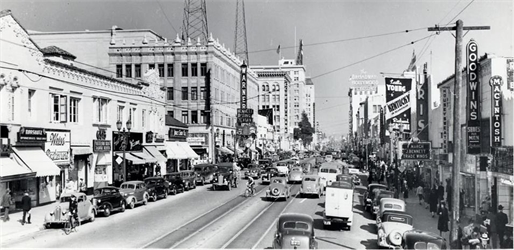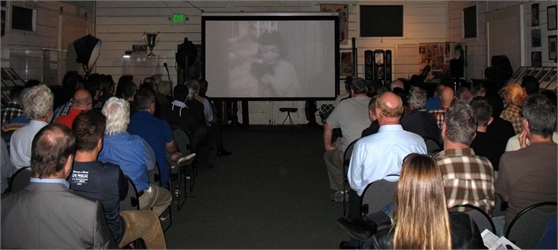Hollywood Heritage
Hollywood Heritage
Preserving historic places in Hollywood, Los Angeles’s most famous neighborhood, is a big job, but Hollywood Heritage Inc. has been doing just that for 35 years. The non-profit organization is dedicated to preservation and education about the early film industry.
Through the efforts of five women, Marian Gibbons, Mildred Heredeen, Christy (Johnson) McAvoy, Frances Offenhauser, and Susan (Peterson) St. Francis who noted the lack of a preservation organization and historical society in Hollywood and used their volunteer and professional expertise to fill that void. They incorporated Hollywood Heritage Inc. in 1980, with former Los Angeles County Supervisor John Anson Ford as Chairman of the Board. In his first message to the members, Ford stated “We must strive to preserve Hollywood’s world-wide renown as the home of the country’s most visible art form.”
Using the slogan “The past is our heritage; the present is our responsibility; the future is our challenge”, the organization educates the public about the physical resources associated with the place called “Hollywood”. Tours and programs about the silent film era, architectural history, incentives for saving buildings, and art exhibits are just a few of the mechanisms that have been employed to raise public awareness over the years.
It was Hollywood Heritage that did the extensive research required to create the Hollywood Boulevard Historic Commercial and Entertainment District and secure its listing on the National Register of Historic Places in 1985 for the 100 plus buildings which comprise one of the world’s most famous “Main Streets”. Since then, Hollywood Heritage has played significant roles in the preservation of numerous national and local landmarks in and around the District, such as the Janes House, the El Capitan Theater, the Egyptian Theater, the Cinerama Dome, TCL Grauman’s Chinese Theater, and the Max Factor Building.
When the Community Redevelopment Agencycame to Hollywood, Hollywood Heritage advocated for including historic buildings as part of the redevelopment plan and was enlisted to perform the historic survey. Today, Hollywood Heritage continues to maintain the Historic Buildings Inventory, an effort it had begun in 1978 to identify and evaluate historic structures. This inventory was the basis for subsequent surveys by the City, and is continuously used by the public.
Soon after its founding, Hollywood Heritage was tasked with saving the Lasky-DeMille Barn, rented in 1913 by Cecil B. DeMille and Jesse L. Lasky as a studio for the first feature-length film made in Hollywood, “The Squaw Man.” This historic structure, originally located at Selma Ave. and Vine St., was the birthplace of Paramount Studios and was declared a California State Landmark in 1956.
Located since 1983 across from the entrance to the Hollywood Bowl, the “Barn” houses the Hollywood Heritage Museum displaying an extensive collection of archival photographs of early film sites, players, sets and related ephemera as well as historic photos of early Hollywood.

The Museum archives contain two important local history collections in addition to its silent film holdings. The Woodruff Collection chronicles the important real estate development of Hollywoodland- known world-wide for its genesis of the famed “Hollywood” sign, and one of the best-designed subdivisions in Los Angeles. The Torrence Collection preserves Bruce Torrence and the Toberman family’s lifelong commitment to Hollywood’s local history, documenting the people, places, and events of the 20th Century.
In 2011, with enormous volunteer effort and generous community contributions, the building was repainted with its original color scheme in time to celebrate the 100th anniversary of the making of “The Squaw Man” in 2013. The Museum has been featured on the Travel Channel and in other Hollywood-related television features and well as in numerous publications. It was listed in the National Register of Historic Places in 2014. It’s open Wednesdays through Sundays.
Throughout its history, the organization has nominated buildings and sites for Cultural Heritage status. Yamashiro, CBS Columbia Square and the 1907 J. R. Toberman house, home of the former Los Angeles mayor, are just a few of the individual historic places protected by this program.

Hollywood Heritage was the steward of the City-owned Wattles Mansion from 1983 to 2009 raising $2.5 million and devoting thousands of volunteer hours in the restoration of this 1903 landmark estate, which includes a Mission Revival style residence designed by renowned architects Myron Hunt and Elmer Grey and its spectacular gardens. At the end of its tenure, it provided the City with cultural landscape and historic structures reports and having listed the property on the National Register of Historic Places and as a Historical Cultural Monument.
In addition to protecting the commercial core, the organization has assisted with the creation of historic residential districts and Historic Preservation Overlay Zones (“HPOZ”) such as the Hollywood Grove HPOZ and most recently assisted the residents of Sunset Square in their efforts to obtain HPOZ status.
Hollywood Heritage assists residents and property owners in finding historic materials, such as photographs and plans to guide restorations. It works with building owners finding restoration contractors, architects, and tenants. Its Preservation Committee meets with developers to ensure appropriate development on sites containing historic resources and advises the City’s council offices and Office of Historic Resources with preservation issues. In his 2015 State of Hollywood address, Councilperson Mitch O’Farrell was eloquent in describing his vision for growth and development, saying “I also like the idea of a Los Angeles where we value historic preservation while encouraging quality, well-conceived growth and development….”
The organization prides itself on being a part of the regional, statewide, and national preservation network. In 2000, it hosted tours of historic Hollywood Boulevard Movie Palaces as part of the National Trust for Historic Preservation’s annual National Preservation Conference and in 2007 welcomed the California Preservation Foundation’s annual Preservation Conference in Hollywood at the Roosevelt Hotel. These activities bring increased awareness of Hollywood’s historic resources and aid in the community’s tourism efforts.

For film aficionados, the Museum offers “Evenings @ The Barn” engaging programs which bring film pioneers, films, and experts on early films and early Hollywood to the general public. New books on Hollywood are debuted in evenings with authors, the latest being Cecil B. DeMille: The Art of the Hollywood Epic.
In 2004 Hollywood Heritage published its first book, Historic Hollywood, written by board members Robert W. Nudelman and Marc Wanamaker. The second, Hollywoodland, written by board member Mary Mallory was published in 2013. The third, a history of the Barn, is due in 2015.
The preservation of cultural and historic places by Hollywood Heritage has improved the quality of life for its residents and provides vital assets to its tourism industry. These efforts have ensured that the significance of our past will live on for future generations. The economic benefits of revitalized historic properties are in the hundreds of millions of dollars. The organization is the public voice of preservation interests. A true partner in the growth and development of Hollywood.